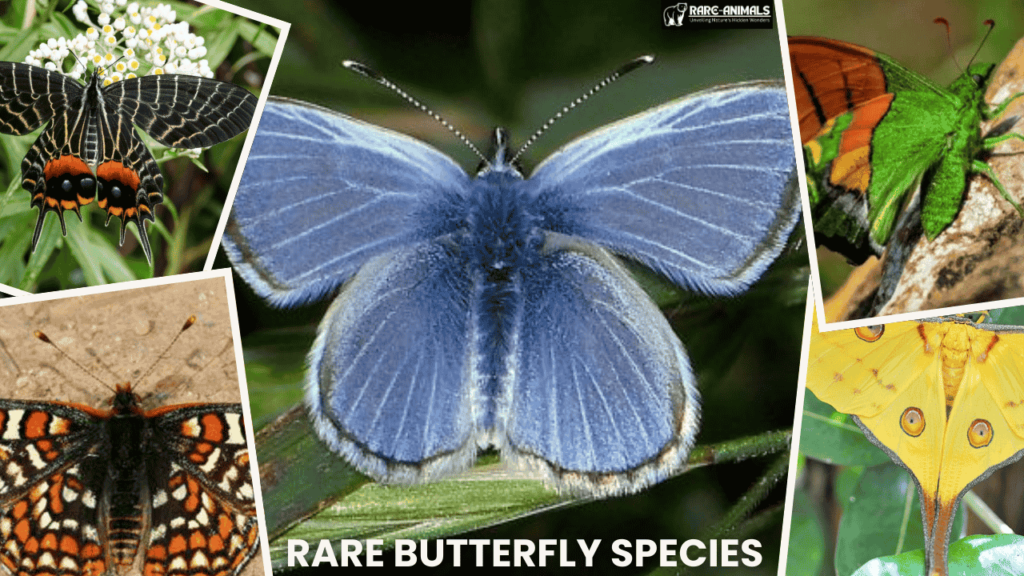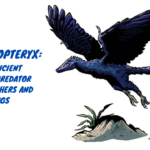Butterflies are among the most beautiful and delicate creatures in the natural world. With their intricate wing patterns, vibrant colors, and fascinating life cycles, butterflies have long captured the imagination of scientists, artists, and nature enthusiasts.
However, some butterfly species are so rare that they are seldom seen in the wild, making them even more intriguing. These rare species face threats ranging from habitat loss to climate change, which makes their conservation a priority.
This article explores the world of rare butterfly species, focusing on their unique characteristics, habitats, conservation challenges, and efforts to protect them. We will also include tables to summarize critical information about some of these species.
Butterfly Rarity
A butterfly species is considered rare if it has a small population size, limited geographic distribution, or is difficult to locate due to specific habitat requirements or behaviors.
Factors Contributing to Rarity
- Habitat Loss: Urbanization, deforestation, and agricultural expansion have destroyed many butterfly habitats.
- Climate Change: Changes in temperature and weather patterns can disrupt the life cycles and migratory patterns of butterflies.
- Specialized Habitat Requirements: Some butterflies depend on specific host plants or ecosystems, making them vulnerable if those resources decline.
- Over-collection: Rare and exotic butterflies are sometimes collected for trade, further depleting their populations.
Examples of Rare Butterfly Species
Below are some of the rarest butterfly species in the world, showcasing their beauty and the unique challenges they face.
Palos Verdes Blue Butterfly (Glaucopsyche lygdamus palosverdesensis)
The Palos Verdes blue butterfly, native to the Palos Verdes Peninsula in California, USA, is one of the rarest butterflies in the world. Thought to be extinct in the 1980s, it was rediscovered in 1994.
| Characteristic | Details |
|---|---|
| Habitat | Coastal sage scrublands |
| Wingspan | 2.5–3 cm |
| Status | Critically Endangered |
| Unique Feature | Brilliant blue wings |
Conservation Efforts
Captive breeding programs have been established to reintroduce the species into its natural habitat.
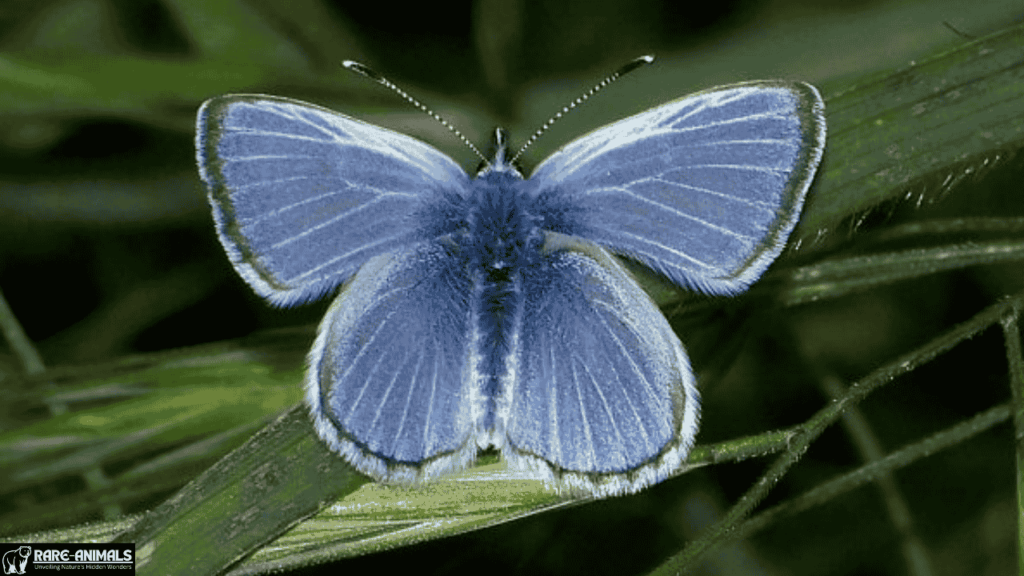
Kaiser-i-Hind (Teinopalpus imperialis)
The Kaiser-i-Hind, meaning “Emperor of India,” is a striking butterfly found in the Himalayan region. Its emerald green wings and elusive nature make it highly sought after.
| Characteristic | Details |
|---|---|
| Habitat | Himalayan forests |
| Wingspan | 10–12 cm |
| Status | Near Threatened |
| Unique Feature | Metallic green patches |
Conservation Challenges
Illegal collection for ornamental purposes and deforestation threaten its survival.
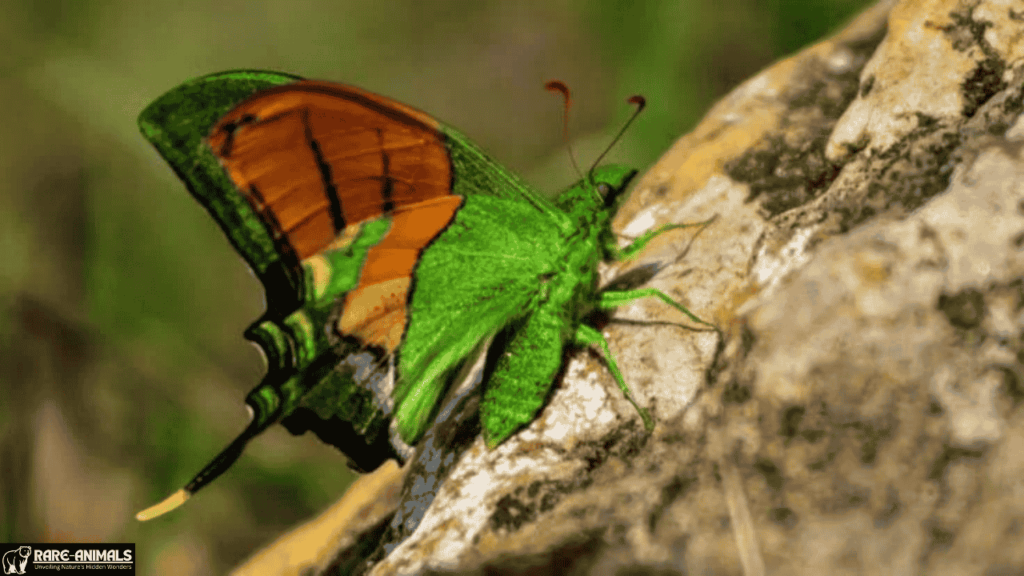
Quino Checkerspot Butterfly (Euphydryas editha quino)
The Quino Checkerspot is native to southern California and northern Mexico. Its populations have declined due to habitat destruction.
| Characteristic | Details |
|---|---|
| Habitat | Grasslands and chaparral |
| Wingspan | 3–5 cm |
| Status | Endangered |
| Unique Feature | Checkered orange and black wings |
Conservation Efforts
Restoration of its host plant, Plantago erecta, is critical for its survival.
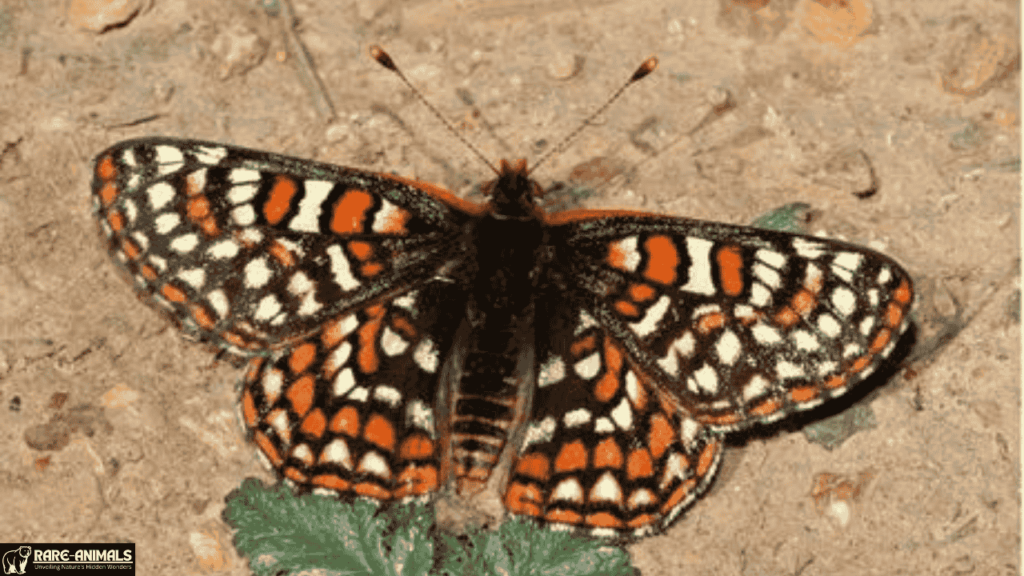
Madagascan Moon Moth (Argema mittrei)
The Madagascan Moon Moth is a rare, large silk moth native to Madagascar. Its long tail streamers and bright yellow color make it a visual marvel.
| Characteristic | Details |
|---|---|
| Habitat | Rainforests of Madagascar |
| Wingspan | Up to 20 cm |
| Status | Vulnerable |
| Unique Feature | Long tail streamers on wings |
Conservation Challenges
Habitat destruction due to deforestation is the primary threat to this species.
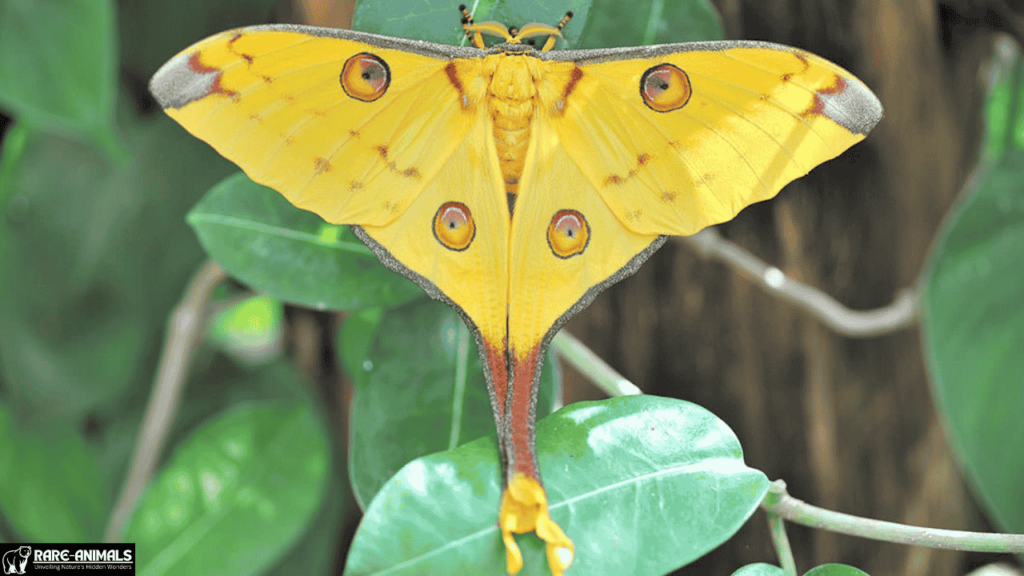
Zebra Swallowtail (Eurytides marcellus)
The Zebra Swallowtail is rare in certain parts of its range due to its dependence on pawpaw trees as a host plant.
| Characteristic | Details |
|---|---|
| Habitat | Deciduous forests and wetlands |
| Wingspan | 6–10 cm |
| Status | Rare (in specific regions) |
| Unique Feature | Striped black and white wings |
Conservation Efforts
Efforts to protect pawpaw trees and their ecosystems help sustain the butterfly’s populations.
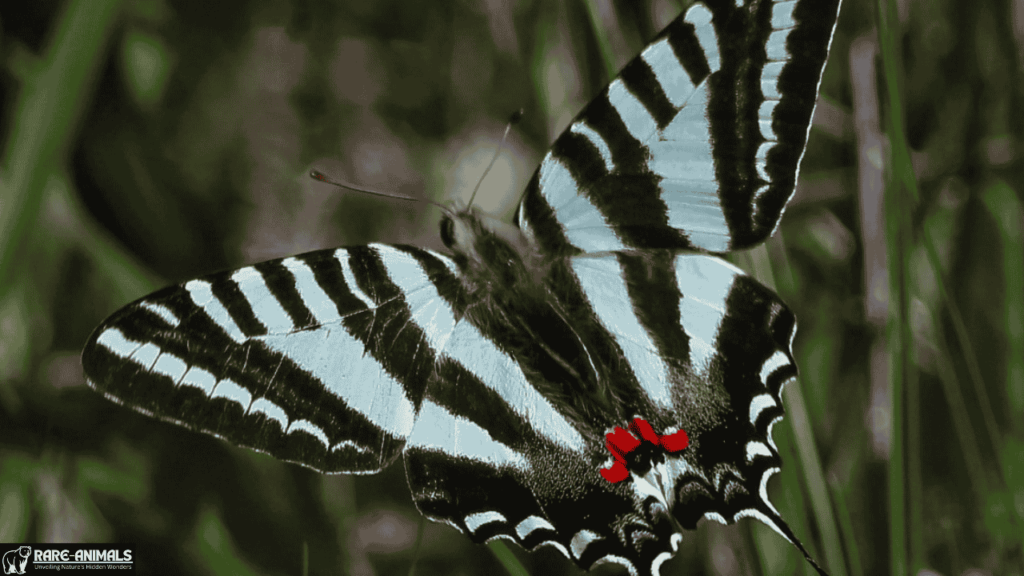
Bhutan Glory (Bhutanitis lidderdalii)
The Bhutan Glory is a rare butterfly found in the Eastern Himalayas. Its intricate wing patterns and restricted range make it a prized sight.
| Characteristic | Details |
|---|---|
| Habitat | Subtropical and montane forests |
| Wingspan | 9–11 cm |
| Status | Near Threatened |
| Unique Feature | Intricate black and yellow patterns |
Conservation Challenges
Road construction and agricultural expansion in its range threaten its habitat.
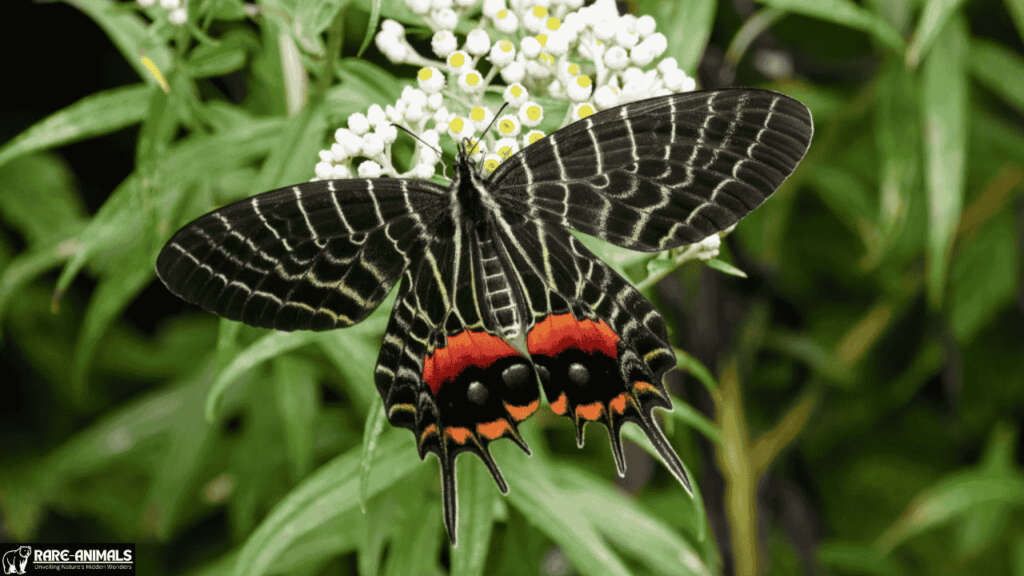
| Species | Habitat | Wingspan | Status | Unique Feature |
|---|---|---|---|---|
| Palos Verdes Blue | Coastal sage scrublands | 2.5–3 cm | Critically Endangered | Brilliant blue wings |
| Kaiser-i-Hind | Himalayan forests | 10–12 cm | Near Threatened | Metallic green patches |
| Quino Checkerspot | Grasslands and chaparral | 3–5 cm | Endangered | Checkered orange and black wings |
| Madagascan Moon Moth | Rainforests of Madagascar | Up to 20 cm | Vulnerable | Long tail streamers |
| Zebra Swallowtail | Deciduous forests, wetlands | 6–10 cm | Rare (region-specific) | Striped black and white wings |
| Bhutan Glory | Subtropical, montane forests | 9–11 cm | Near Threatened | Intricate black and yellow patterns |
Conservation of Rare Butterfly Species
Challenges
- Habitat Destruction: Urbanization and deforestation remain the biggest threats.
- Climate Change: Altered temperatures disrupt breeding and migration cycles.
- Over-collection: Poaching for private collections continues to deplete populations.
Conservation Strategies
- Protected Areas: Establishing butterfly reserves and sanctuaries.
- Breeding Programs: Captive breeding to boost populations.
- Community Engagement: Involving local communities in conservation efforts.
- Legislation: Enforcing laws to prevent illegal collection and trade.
Conclusion
Rare butterfly species are some of the most captivating creatures on Earth. Their uniqueness and fragility make them vital symbols of biodiversity and environmental health. However, the challenges they face underscore the need for immediate conservation actions.
By protecting their habitats, raising awareness, and supporting conservation programs, we can ensure that these species continue to grace our planet for generations to come.
FAQs
1. What defines a butterfly species as rare?
A butterfly species is considered rare if it has a small population, limited distribution, or faces significant threats like habitat loss or over-collection.
2. Why are rare butterfly species important?
Rare butterflies play a crucial role in ecosystems as pollinators and indicators of environmental health.
3. How can I help conserve rare butterflies?
You can support conservation efforts by planting native host plants, avoiding the use of pesticides, and contributing to organizations that protect butterfly habitats.
4. Are rare butterflies protected by law?
Many rare butterflies are protected under local, national, or international laws, such as the Endangered Species Act or CITES regulations.
5. Can rare butterfly species recover?
Yes, with targeted conservation programs and habitat restoration, many rare butterfly populations can recover and thrive.

Alveena is an experienced content writer with a knack for crafting engaging and insightful pieces. She thrives on breaking down complex ideas and presenting them as clear, captivating content that resonates with readers.

